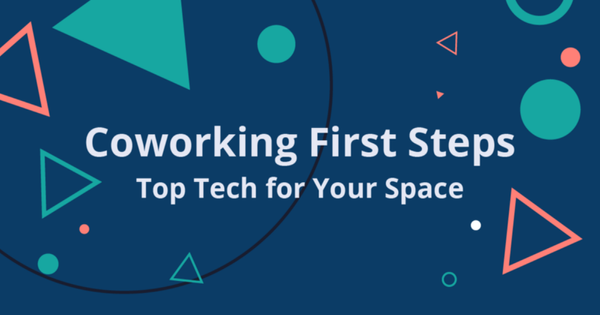We’re sharing strategies from our extensive experience helping coworking and flexible workspaces of all sizes scale their operations.
A quality tour is often the difference between a missed opportunity and a lifelong member of your space. All the work you put into managing your operations, from making sure that there’s enough toner in the printer to knowing exactly what volume to play your background music in the main entryway, is all for naught if your tour doesn’t hook visitors and leave them itching to return.
We’re sharing proven strategies that build solid relationships fast and lay the foundation for selling memberships that make your community stronger.
Be responsive beforehand
True story: When a friend of mine wanted to join a coworking space in his neighborhood, he sent emails to a half-dozen coworking spaces nearby asking about arranging a tour. Half of them never responded. Needless to say, it didn’t matter how nice their photos looked online, ignoring his request meant that those spaces never had a shot at bringing him on as a member.
It may sound like obvious advice, but if you want to bring in new members—be sure to respond to them! Tours may not be the way you will persuade every lead to join your space; but being ready to host the folks who crave it will be essential if you want to be considered.
Know what they want, even if they don’t
Before the tour starts, try to have some idea of their motivations for joining. If you have a sign-up form, add a box for prospective members to tell you exactly what they’re looking for. Public professional profiles may also aid you in forming a picture of what a lead is looking for. Make sure to ask what kind of work they do (or want to do) and what they expect to find at their workspace.
Use this information to prep your tour. It doesn’t need to be a completely custom experience every time. But if someone’s coming by to look into moving their small software company into a private office, you need to prepare differently than if a freelancer is dropping by. If they’re concerned about security that’s a completely different mindset than if they’re concerned about sustainability. You need to prepare for these differences in advance.
By the end of the tour you should have outlined the value of your space. The better you know how you’re matching a visitors needs, the more you can convincingly pitch a membership without giving away the feeling you’re upselling it. First-time coworkers in particular may need extra help communicating their needs in this new context: ask questions that often come up that will help them understand the needs they have, so you can find where you’ll offer the most value.
Wow them when they walk in
In a supermarket, we’re greeted by bright bouquets and fresh produce, not necessarily because that’s what we want to buy, but because it positively influences our perception of the experience and encourages us to spend and feel good about it.
What are you selling at your coworking space?
You’re selling productivity, community, and the idea that membership doesn’t just mean they’ll just enjoy the workday more but that they may start looking forward to the next workday.
When your tour kicks off, you want their first impression to be “this is where I need to be,” even if they don’t know why just yet.
Make it personal
Talk to your current members and ask them, bluntly, what the deciding factor was when they signed up. Then ask them if they’d be willing to be “on-call” when you have a prospective member with a question they might be able to answer.
Thinking back on my own best experiences visiting coworking spaces, the best tours usually ended in the kitchen or break room, chatting with other members about our shared interests. That kind of experience has absolutely nothing to do with how well I’ll work in the space, but it has everything to do with how I’ll feel about coming in every day.
Automate what you can
Your tour might include a “test-run” portion where leads will have the chance to whip out their laptop, grab a coffee, and start working for a couple of hours to see if the conditions are just right for them.
In that case your tour sign-up form gains new urgency. Use it, or the first mail in your drip campaign, to guide your lead to a designated membership plan that will allow them to grab Wi-Fi credentials so they can seamlessly get online when they arrive.
Setting up a “tour” plan in Cobot is as simple as creating a free membership level with access to the rooms you want to show off. Since it’s a free plan, it won’t count against your plan limits and the member can seamlessly upgrade their account if they choose to join your space (whether it’s that day or in a few months).
Mark Eaton of The Corner Coworking in Canada has used this exact setup in conjunction with Zapier, so prospective members are automatically linked to their CRM solution.
You can use automation to protect the continued comfort of your existing members. The last thing you want is for a tour to disrupt the flow of a member in your space, but the act of seeing your existing membership is key to communicating your value proposition. Before a tour starts, think about sending an automated message to members of your community to keep them in the loop, whether in Slack or another messaging service. Importantly, it can encourage more curious members—your “on-calls”—to come up, say hi, and start building new connections.
Help people visualize it
It’s something that athletes and pianists swear by; you probably did it too before your last job interview. Turn an abstract need into a vivid picture of what life would look like at your space! Your goal is to avoid a decision that comes down to which space checks which boxes and is instead made in their gut when they imagine their life with the benefits of a membership at your space.
Say the freelancer you’re showing around wishes that they had a professional space to host important clients. Ask them leading questions: Do you want a professional space like our lounge to chat with clients about the details in a formal setting? Would you have a need for this high-end projector in a private meeting room? Do you have clients who prefer to meet in an ambient environment, like this one? Or do you mostly work with clients via call, and need access to those soundproof phone booths?
Questions like this will help make your space memorable; people will recall it because they can picture where they’d put their coffee down in a booth, or how they’d unfurl their notebook for a meeting.
We picked this tip up from Ian Minor who shared it on the Hot Water Podcast. You’ll find more about it—and other great resources—at the end of this article.
Handling virtual tours
Virtual tours are a staple of coworking during the pandemic and they will continue to form a sizable chunk of your tours long after masks have become a symbol of a hazily-remembered era.
Unfortunately they’re also akin to doing all of the above sections on expert mode.
A walkthrough with your phone or computer isn’t advisable, no matter how nice your space is; focus on high quality photos and visual aids instead, ideally some 360 stills that can accurately replicate the feeling of walking through the space.
Over a video call, distractions are amplified. A quick glance at the phone, another tab, or life beyond the screens are going to be fighting to seize the already limited time you have to make an impression. Don’t let that chip away at your pitch—use it to your advantage.
Ask lots of questions quickly. Do not waste any time going over things that don’t matter directly to their individual case, you don’t have time to spare. Instead, tell relevant stories. Pull in multimedia aids, like videos from past events or websites that contain success stories from your space. If you have any upcoming events that they can join, tell them they’re welcome to join and that you’ll give them a proper introduction (since it’s so much more difficult to be a new participant in a video call than an after-work chat in the kitchen). Your extra effort will pay off if the prospective member feels like they’ve just met a new friend who knows more about them than some of their old friends.
Practice!
Your coworking space probably experiences small physical changes all the time, like adding new hardware or offering new services. The makeup of your community, popular events, or other one-off projects and partnerships will naturally affect your tours month-to-month. Make sure that you meet regularly and often with everyone in your team who hosts tours to discuss how these changes impact them.
It will also create the opportunity to find out how recent tours went and for the team to share the tips and tricks their learning as they go and while it’s still a fresh memory. If you have the chance, going on each other’s tours within your space will allow you to discover new ways to ask questions, identify places to improve the pitch, and can allow you to role-play how differing needs among leads will inform aspects—and the overall experience—of a tour.
Additional resources
How to Think About and Build Coworking Memberships That Work for Your Clients
Ian Minor joins the Hot Water Podcast to discuss everything to do with memberships, from strategies to bring in new memberships, to what plans work best, to the problems with discounts.
Questions to ask when touring a shared office/coworking space...
A view from the other side. See what questions are most important to members—get your persuasive answers ready!
Virtual Tours: The Lockdown Legacy We're Happy To Keep | AllWork.Space
Will virtual tours outlive the pandemic? There are arguments that virtual tours aren’t simply a watered-down substitute for the real thing, instead, they’re a tool to help your space connect with potential members in a way that works best for them.



